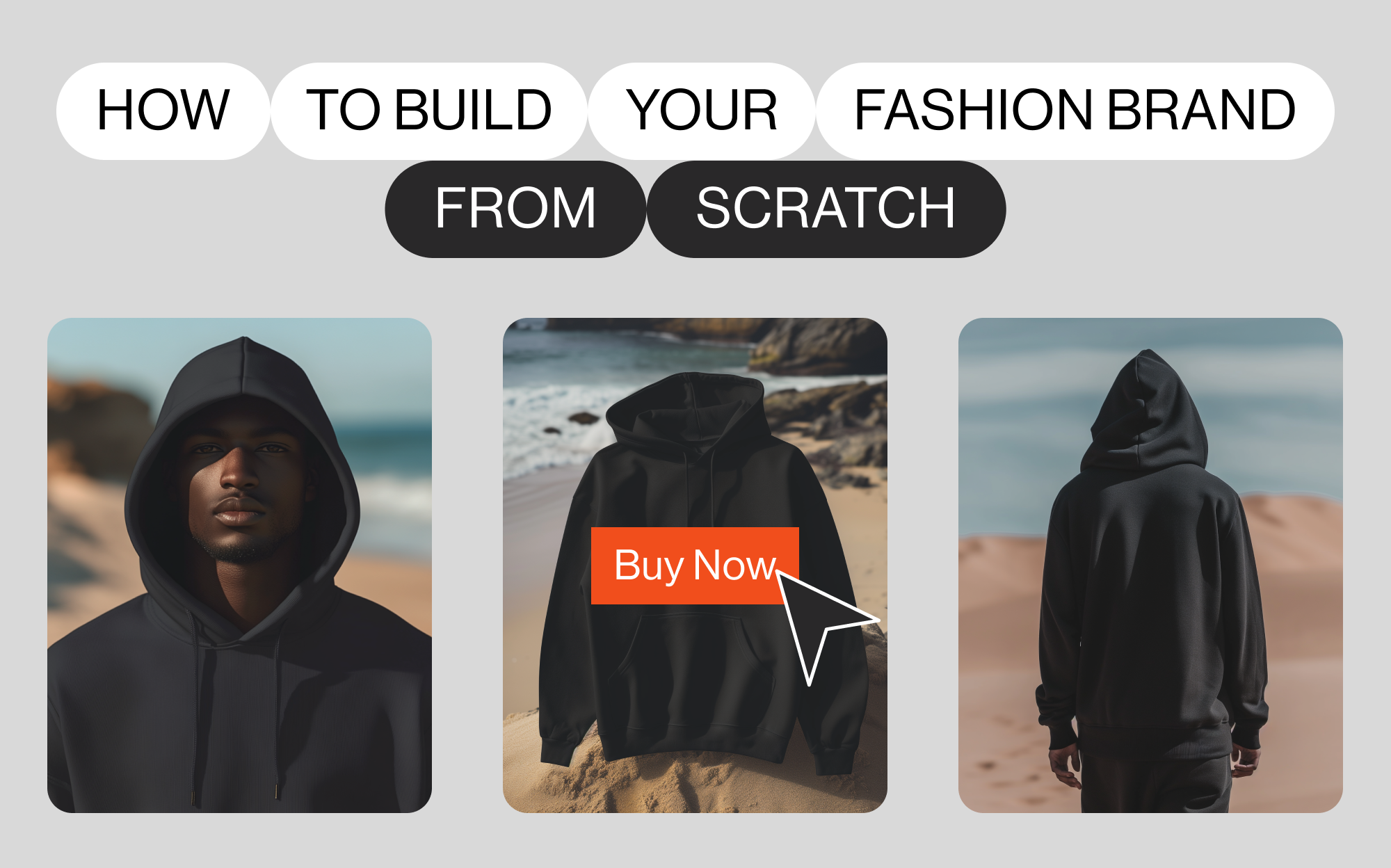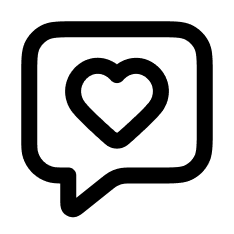
How to Start a Clothing Brand
Starting and selling your own apparel brand is far from impossible, but that doesn't mean it's simple. Establishing a clothing brand involves multiple steps, from defining your brand identity to designing your collection to launching and marketing your products. Nonetheless, if you have a great idea of a clothing brand and the drive to take these steps, starting your own clothing brand can be lucrative.
According to market research, the global apparel market is projected to grow to 1.89 trillion USD by 2025, showcasing significant opportunities for new brands. Dropshipping — a method popular among new entrepreneurs — is becoming common and allows new brands to get off the ground quickly and easily. Even designing a website and logo while marketing them is not as difficult as it once was, thanks to the availability of user-friendly logo maker tools.
If you have a great idea for an apparel line and are looking for the best place to start, consider these steps when starting your clothing brand.
Define your Brand Identity
Your brand identity is the essence of your clothing line. It’s what sets your brand apart and the reason your customers keep coming back. It includes your brand name, logo, color themes, and overall aesthetic. Defining your brand identity helps you stand out in a crowded market and attract your target audience.
If you’re just starting out and need logo ideas, tools like Ucraft Next’s AI Logo Generator can get you started with multiple ideas, colors, and icons. It’s free and can help you create a professional logo that captures your brand’s essence, or simply give you inspiration so you can tweak it later.
Keep this brand identity in mind for any marketing you do later. You want the emotion of your images and marketing copy to reflect the ‘style’ of your brand. If you want something cool and classy, keep the message short and punchy with images that are simple but striking and bold. If you’re selling something fun, try vibrant colors and casual text.
Conduct Market Research
Market research is crucial to understanding your target audience, competitors, and industry trends. You need to have an idea of what your niche is interested in and how your competitors fulfill this interest. You should also take the time to understand what your competitors have to offer so you can outdo them at their own game or provide something that they do not.
Use SEO tools to analyze search trends and keywords related to your niche. Tools like Google Trends and Ahrefs can provide valuable insights into your market. You can also look at similar brands and influencers to understand what works and what doesn’t. The idea is to sell an idea or a feeling to your audience, and this idea should resonate through your products, marketing, and brand.
Develop a Business Plan
A solid business plan outlines your mission, vision, goals, budget, pricing strategy, marketing outline, and sales forecast. This plan will serve as your roadmap, helping to guide your business decisions when the correct path forward is unclear.
Depending on where you are, you may want to consider offering international shipping, especially if you live close to other countries or get frequent demand from overseas. You can use other platforms like PayPal and Stripe as well, as they all offer safe and reliable options for processing international transactions.
Design Your Collection
Whether you hire a professional designer or create designs yourself, your collection should reflect your brand identity first. You can incorporate your logo into designs on the clothing itself, or try to keep the same design language throughout the catalog. Remember to consider the season and holidays, whether the clothing is designed for males or females, what type of market you’re going to operate in, and what type of product you want to sell. When in doubt, do some research — there are lots of helpful design articles online that can get you started.
As for production, focus on quality (within budget) and unique designs that appeal to your target audience. Screen-printing logos on high-quality materials can add a professional touch to your products and will allow them to last for a long time through wash and wear and tear. Always consider material costs in your pricing strategy to ensure profitability, but try to find a sweet spot for your audience. Streetwear can be expensive, but should be relatively affordable, whereas something that you only wear once in a while can sport a much higher price tag.
Source Manufacturers
Finding the right manufacturers is maybe the biggest step for your clothing brand’s success. When you’re looking for a supplier, consider the cost, location, shipping time, and quality they can provide. All of these factors will affect your bottom line and your ability to sell your clothing.
The flat cost of production should be the first thing to consider. Compare what they’re offering against other competitors and try to find reviews to see if the quality of their manufacturing is worth the price they’re asking. Next, find out how long their average shipping time is. This will affect how quickly you can get those items to your customers, and in the clothing business, it’s important to be transparent about factors like arrival dates.
With shipping times, you should consider the location of the supplier. A supplier that is in your region with long shipping times is not a bad option, similarly to a supplier that is overseas with fast shipping times. Also consider the location to aid in your advertising — being able to truthfully proclaim that your product was “made in my country” could be a factor for your audience.
While you’re considering these factors, you may wonder how you’ll be keeping track of your shipping. A platform like Ucraft Next has shipping method management built into the platform, so there’s no need for third-party support. If you’re using a different platform to sell your merchandise, consider hiring a logistics company or asking your manufacturer if they offer any shipping management services.
Consider Special Discounts
When you have your store up and running, consider offering your customers some attractive discounts, because this can attract customers and build loyalty. It’s also a good way to clear up outdated inventory or clothes that are no longer in season. Keep in mind that this method and the following ones work well with social media advertising and word-of-mouth.
Some other approaches are special discounts for first-time buyers and loyalty programs for customers that make a purchase. First time buyers have never had the opportunity to use your products before, so offering a discount can really help convince them to try. Loyalty programs that give discounts based on a certain number of purchases or give a flat percentage off for a subscription incentivize customers to return to your brand first.
If you want to offer a loyalty program that doesn't rely on flat discounts, you could offer perks for a certain amount of money spent. One great item to give away are gift cards because it will give something to your loyal user that automatically makes them a repeat customer.
Build an Online Presence
A strong online presence is essential for modern clothing brands. Social media, influencer collaborations, email marketing strategy, and online advertisements are all ways to build your online presence. For those looking to explore cutting-edge opportunities, starting a Web3 business can unlock the potential of decentralized platforms and future-ready tools
Utilize social media platforms to start spreading the word about your brand. Remember your brand identity here, because your videos on TikTok and your Instagram Reels should convey that feeling too. You can also take advantage of influencer partnerships to make an impression on their audience, which is already built up. If the influencer collaboration yielded good results, continue to partner with them — it's a win-win.
Finally, email marketing campaigns help reach and engage with audience members in a way that is more personalized than social media. Just remember to do sufficient research on what your audience is looking for. Email marketing remains an effective and worthwhile way to advertise your brand.
Remember to Build Your Website
When building an online presence, some eCommerce businesses prefer to begin by running their business through Instagram, Facebook, or other social media platforms. While there is nothing wrong with this approach, it can become cumbersome as you grow. Social media platforms lack the customization and utility of a real website, and if your company grows, it’s a good idea to invest in building your own storefront.
Benefits of Having a Website
Having your own website lets you bring your brand identity to a new level. You can customize your content, taking advantage of SEO and targeted marketing language, and add images at their full quality rather than what a social media platform limits you to. Quality eCommerce platforms provide numerous features that make running an online store easier, like integrated payment systems, shipping and inventory management, analytics, easy website navigation, and more.
Ucraft Next offers all of this on its free version and the customization options only increase from there. It has a built-in CMS system that features SEO and analytics tools to help you rank highly on Google’s SERP, and WebP image hosting so your site speeds stay high. Best of all, it offers professionally designed templates to get you started, and they’re all completely customizable so you can tailor the online shop experience to your specific brand identity, all at industry-low prices.
Navigation is Key to a Good UX
Breadcrumbs are navigation links that show your path from the homepage to the current page, displayed at the top of a product or category page. In a clothing store, breadcrumbs allow buyers to easily move between categories, such as "Home > Men > Jackets > Leather Jackets", making it quicker to navigate back to previous pages and explore options. Ucraft Next makes breadcrumb setup effortless, improving UX, reducing cart abandonment, and boosting conversions.
Search Can Make or Break Your Store
In fashion eCommerce, a well-designed search bar is critical for success. Customers often know what they’re looking for, and if they can’t find it fast, they’ll leave. A good search bar lets buyers quickly find products by name, category, size, color, etc. Ucraft Next makes it easy to set up an advanced search, helping shoppers find exactly what they need and maximizing your store’s sales potential.
Upsell and Cross-Sell and Related Products are a Game Changer
Leveraging upsell, cross-sell, and related product strategies can significantly increase your sales. Upselling encourages customers to consider higher-value items, cross-selling suggests useful accessories or add-ons, and related products keep shoppers browsing. These tools not only boost average order values but also enhance the overall shopping experience. Ucraft Next simplifies integrating these features, allowing you to effectively drive more sales from the outset.
No Detail is Too Small in a Product Page
To drive conversions, product pages need to be as detailed as they are visually appealing. High-quality images from multiple angles, clear descriptions, and customer reviews help build trust and showcase the product. Including precise information on size, fit, material, color, and other specifics helps customers make informed purchasing decisions. Ucraft Next makes it easy to bring these elements together, helping you create product pages that are both beautiful and informative.
AI Can Do the Heavy Lifting
With quality eCommerce platforms, you can ask AI to do the work for you. For instance, Ucraft Next’s Generate with AI tool writes high-conversion, SEO-optimized product descriptions in seconds, based on the product title and keywords provided in the description field. ,Imagine loading your store with hundreds of items in a single day, with practically no effort.
AI Assistants and Live Chat Reduce Costs
Another way AI can simplify your work is by handling customer inquiries. AI customer support assistants provide instant, 24/7 responses, reducing the need for a large support team and saving costs. For instance, Ucraft Next’s built-in Hoory AI assistant delivers instant help in any language. Additionally, the live chat feature ensures that customers who need personalized assistance can connect with a human representative when necessary. This efficient support not only enhances customer satisfaction but also helps drive higher sales.
Guest Checkouts Reduce Cart Abandonment
Offering guest checkout with multiple payment methods is essential for an uninterrupted shopping experience. Allowing customers to make purchases without creating an account speeds up the process and reduces friction, while providing various payment options - like credit cards, PayPal, and digital wallets - ensures that customers can pay in their preferred way. This flexibility can significantly increase conversion rates and reduce cart abandonment.
Monitor and Adapt
Congratulations! Your website is up and running, and traffic is continuing to grow as more and more people find out about your brand. Your first sales are coming in, and influencers are starting to mention your brand. But your work isn't done yet!
Use analytics to continuously monitor your market, sales, and customer feedback. Keep an eye on the market to stay up-to-date on trends and adjust your strategies to remain relevant. If your sales are not rising fast enough or dipping, there could be a disconnect somewhere in your sales funnel to customer journey. Remember to make it easy for customers to find and buy what they want from your store. Finally, ensure you have robust customer service to address any issues promptly to maintain customer satisfaction and trust.
If You can Market It, You Can Sell it
Marketing a clothing brand involves a multifaceted approach that combines a deep understanding of your brand identity with strategic planning and innovative social media tactics. By defining a clear brand identity, conducting thorough market research, developing a comprehensive business plan, and leveraging modern website building tools, you can effectively reach and engage your target audience.
Utilize the power of social media, influencer partnerships, and email marketing to build a robust online presence, while offering incentives like discounts and loyalty programs to attract and retain customers. Remember, the key to success lies in staying adaptable, listening to your customers, and continually refining your strategies based on market trends and feedback.
With a strong foundation and a proactive approach, you can not only launch your clothing brand, but ensure its growth and sustainability in this competitive market. Marketing is an ongoing process, and by consistently delivering value and engaging with your audience, you can build a loyal customer base and achieve long-term success.
Related posts
446,005 entrepreneurs like you already have a head start
Become one of them by getting world-class expertise delivered into your inbox, for free.











